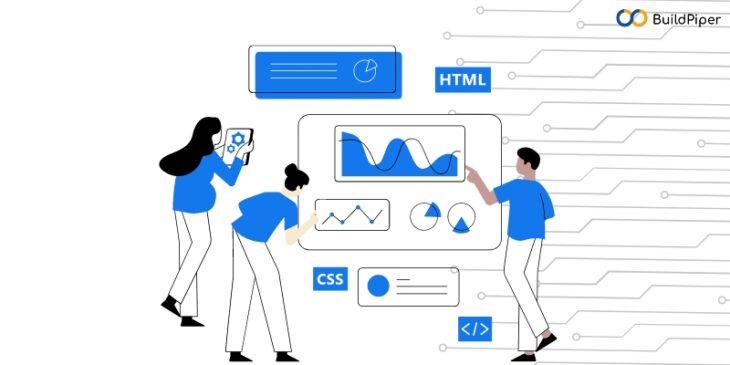
In the fast-paced realm of software development, ensuring the reliability and functionality of applications is paramount. One integral aspect of this quality assurance process is end to end software testing, a robust methodology designed to validate the seamless operation of an entire software system. As the complexity of software ecosystems continues to grow, understanding the significance of end-to-end testing becomes crucial.
This blog aims to unravel the mysteries surrounding end-to-end testing, offering a comprehensive introduction to its principles, methodologies and real-world challenges. From its fundamental concepts to advanced techniques, we’ll delve into the intricacies of this testing approach, shedding light on the implementation and challenges of this approach.
How to implement End-to-End testing?
Implementing end to end software testing involves a systematic approach to ensure comprehensive coverage of your application’s functionality. Here’s a step-by-step guide to help you implement end-to-end testing effectively:
Define Testing Scope and Objectives
- Clearly define the scope of your end-to-end testing. Identify critical user workflows and functionalities that are essential for your application.
- Set specific objectives for the testing phase, such as validating user journeys, ensuring data integrity and identifying potential integration issues.
Select a Testing Framework
- Choose a suitable testing framework based on your application’s technology stack. Popular frameworks include Selenium, Cypress, Puppeteer, TestCafe and Protractor.
- Consider factors such as community support, documentation and integration capabilities when making your framework selection.
Set Up Test Environment
- Create a dedicated test environment that mirrors your production environment as closely as possible. This environment should include all necessary dependencies, databases and configurations.
Identify Test Scenarios
- Break down your application into key functionalities and user workflows.
- Identify and prioritize critical test scenarios that cover end to end user interactions. This may include user authentication, form submissions, navigation and data processing.
Write Test Scripts
- Using your chosen testing framework, write test scripts that automate the identified test scenarios. Write clear and maintainable code to ensure easy debugging and updates.
- Leverage page objects or similar patterns to enhance script modularity and readability.
Handle Asynchronous Operations
- Account for asynchronous operations in your application, such as AJAX requests, by incorporating appropriate waiting mechanisms in your test scripts. This ensures that your end to end tests wait for elements to appear or conditions to be met before proceeding.
Execute Tests
- Run your end to end tests regularly as part of your Continuous Integration/Continuous Deployment (CI/CD) Pipeline. This helps catch issues early in the development process.
- Execute tests in various browsers to ensure cross-browser compatibility.
Analyze Test Results
- Review test results to identify and prioritize issues. Most testing frameworks provide detailed reports highlighting the success or failure of each test case.
- Integrate your testing tools with reporting and notification mechanisms for efficient communication within the development team.
Maintain and Update Tests
- Regularly update your end to end tests to reflect changes in the application. As the application evolves, ensure that your tests remain relevant and effective.
- Address flaky tests promptly, as they can lead to false positives or negatives.
Collaborate Across Teams
- Foster collaboration between development, testing and operations teams. Continuous communication ensures that everyone is aligned on testing priorities and results.
By following these steps and adopting a thorough and systematic approach, you can successfully implement end-to-end testing as an integral part of your software development lifecycle.
Challenges of End-to-End Testing
While end to end software testing is crucial for ensuring the overall functionality and integrity of a software application, it comes with its own set of challenges. Addressing these challenges is essential to maximize the effectiveness of end to end testing software. Here are some common challenges:
Complexity and Execution Time
- E2E tests often involve multiple components and require interaction with databases, APIs and external services. As a result, these tests can be complex and time-consuming, leading to longer feedback loops in the development process.
Maintenance Overhead
- As the application evolves, end to end testing software may need frequent updates to align with changes in the user interface or underlying codebase. The maintenance of E2E tests can become a significant overhead and failure to update them may lead to false positives or negatives.
Limited Test Coverage
- Achieving complete test coverage for all possible user scenarios can be challenging. It’s often impractical to test every permutation and some edge cases may be overlooked, potentially leaving critical issues undiscovered.
Integration Challenges
- E2E tests may face challenges when integrating with third-party services, APIs or components. Changes in external dependencies can impact test results and maintaining consistent test environments can be challenging.
Limited Parallel Execution
While parallel execution can help speed up test suites, not all E2E tests can be easily parallelized. Some tests may have dependencies or shared resources that limit the extent to which they can be executed concurrently. Addressing these challenges involves a combination of best practices, effective test design and the use of appropriate testing tools and frameworks. Regularly reviewing & updating E2E test suites and fostering collaboration between development and testing teams can help mitigate these challenges. All of this also ensures the continued effectiveness of end-to-end testing software.
The Final Conclusion
In today’s dynamic and competitive technological landscape, where user satisfaction is paramount, adopting end-to-end testing practices is not just a best practice but a necessity. It contributes to the overall quality assurance strategy, promoting a culture of continuous improvement and innovation. As we navigate the complex terrain of modern software development, embracing end-to-end testing is a strategic investment that pays off in terms of enhanced product quality, customer satisfaction and ultimately, the success of your software applications.



